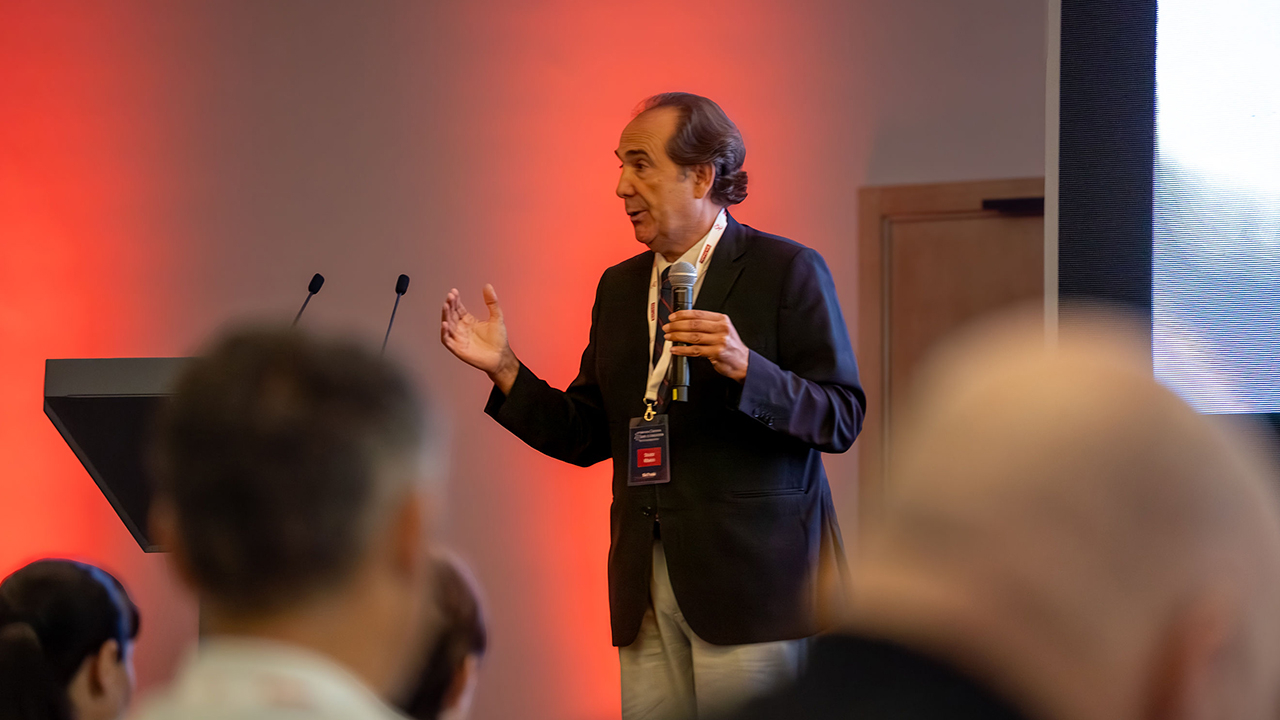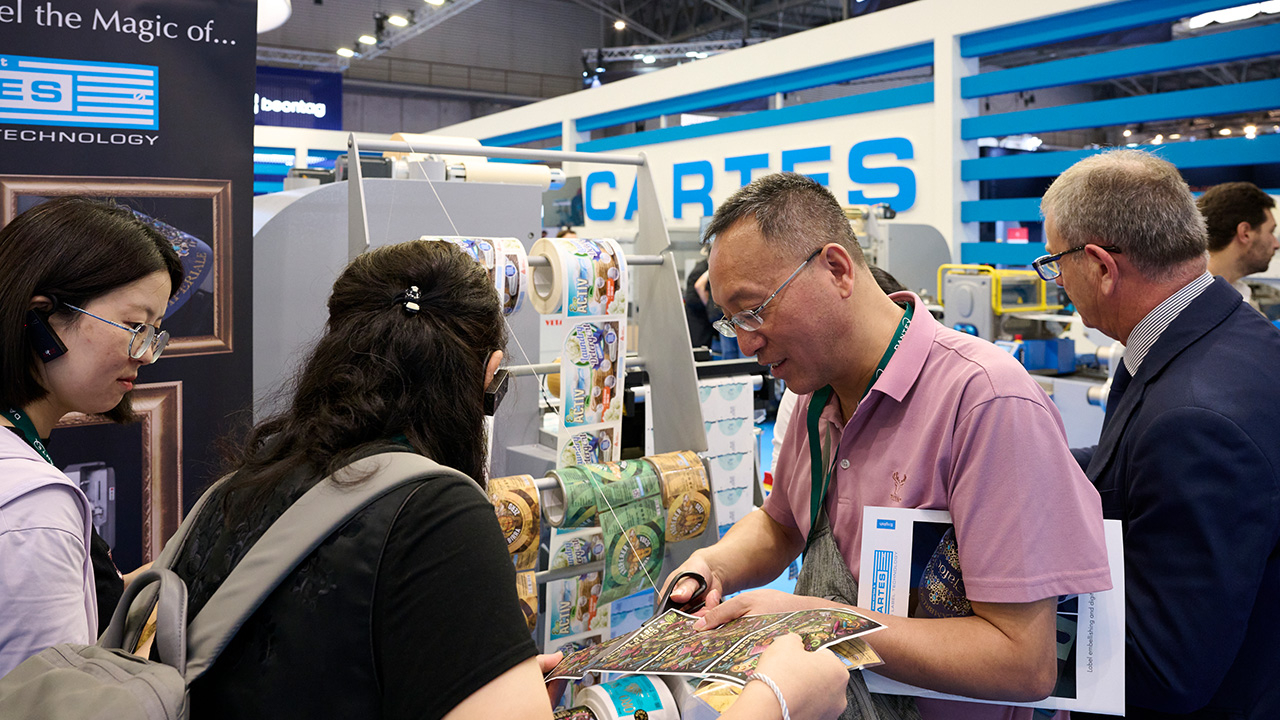Industry 5.0 roadmap unveiled at Sistrade anniversary
The impact of quantum computing, AI-driven manufacturing and the future of the print industry were discussed at Sistrade’s 25th anniversary event.

Sistrade founder and CEO António de Sousa Ribeiro
Sistrade has celebrated its 25th anniversary with a conference looking ahead to the challenges and opportunities presented by Industry 5.0 automation.
Sistrade develops factory management and workflow automation systems for every sector of the packaging industry, including labels, flexible packaging, folding cartons, corrugated and security printing.
In his keynote address, Sistrade founder and CEO António de Sousa Ribeiro noted that the company was one of the first ERP/MIS developers to go fully web-based in 2000, at a time when the wider IT infrastructure was still at an early stage of development.
Looking forward, Ribeiro predicted that quantum computing
will be a transformative technology, allowing the development of new neural networks, which will lead to a new way of living and working. ‘A lot of things will change. It will mean fewer people, more automation and more smart machines. Although automation is very important, it is still people making the strategic decisions.’
The next generation of AI-driven planning systems will be
‘predictive and autonomous’, capable of large-scale optimization of management processes.
‘This will be the era of cyber-physical systems, true intelligence and hyper-automation. Supply chains, scheduling, planning and logistics will be dynamically optimized. Human-AI collaboration will redefine productivity in Industry 5.0. We will see a shift from MIS/ERP being a system of record to an intelligent decision-making platform. The focus will be on real-time data being used in autonomous workflows. Smart software will be able to detect anomalies and patterns in vast amounts of data.’
These observations were echoed by Sante Conselvan, president of FTA Europe, who described how AI-driven automation will transform the flexographic workflow. ‘Print process operation will be by digital sensor and in-line cameras without manual monitoring, with remote makeready, start and stop.’
Sistrade ecosystem
Sitting at the center of numerous packaging-related industrial sectors, Sistrade is well-positioned to understand the challenges and realize the benefits of Industry 5.0.
The company’s software modules connect the full packaging
workflow from design, approval and pre-press, to tooling
management, communication with production machinery, and online and off-line quality inspection systems.
Sistrade is also heavily involved in the automation of complex, large-scale packaging operations, coordinating robotics, AGVs, automated assembly, packaging and palletizing.
A presentation from Eckhard Braun and Holger Ochel from
Falcon Concept Solutions explained the lessons learned from a project to develop a large-scale, fully automated folding carton plant.
Ochel echoed earlier speakers by insisting that people are still the key. ‘Shopfloor machine operators are now analysts, supported by AI to take the right decisions.’
“Although automation is very important, it is still people making the strategic decisions”
Fabio Coelho, head of development at Sistrade, laid out the guiding principles for Sistrade’s software development teams: predictive OEEE insights; predictive machine maintenance; automatic optimization of production based on historical and real-time data analysis; algorithms that learn from production history to suggest efficiency improvements; real-time decision making such as redirecting production orders, adjusting machine parameters or reorganizing tasks; integrating augmented reality and virtual reality (AR/VR) for maintenance, training and production monitoring; and increased data security and compliance.
Coelho described how Sistrade’s Scheduling as a Service tool already makes use of machine learning based on historical data and integrates with other ERPs and MIS through APIs to deliver fully automatic planning without human intervention.
Trends
The conference attendees learned how software is evolving with key industry trends. For example, increasing consolidation in the labels industry has led to the development of software to handle multi-site operations. This works from a set of master data and workflow rules, including CRM and price tables, and automatically handles inter-company transactions and delivery notes.
With the increasing need for converters to generate sustainability data, Sistrade’s energy management module now delivers real-time information on the consumption of electricity, gas, water, pressurized air and CO2 footprint. These tools allow historical comparisons to be made by job order.
This information can also be integrated into Sistrade’s Digital
Product Passport module, along with relevant information from other parts of the Sistrade ecosystem, such as materials and inks traceability.
This writer came away from the Sistrade event with a much
firmer grasp of the opportunities presented by the transition to Industry 5.0, and the continued drive of founder and CEO António de Sousa Ribeiro to lead the industry down that path.
Stay up to date
Subscribe to the free Label News newsletter and receive the latest content every week. We'll never share your email address.


